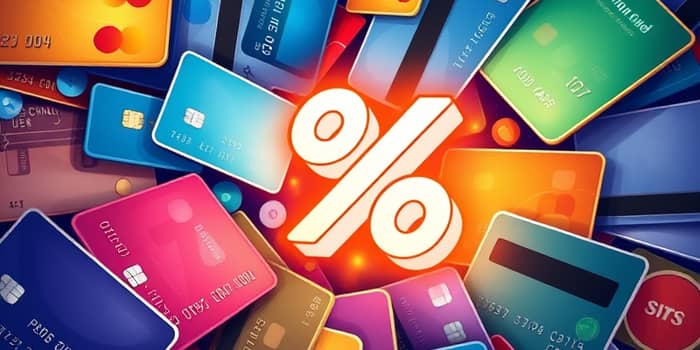
Credit card interest rates can feel like an enigma for many consumers. Yet, by breaking down the mechanics behind these rates, you can transform uncertainty into confidence. Understanding the way issuers calculate and apply interest not only empowers you to make smarter spending decisions, but also opens the door to potential savings. Whether you are paying balances monthly or planning a large purchase, unraveling the mysteries of credit card APRs can change the way you manage your finances.
At its core, credit card interest is the cost you incur when you borrow money from a card issuer. Expressed as an Annual Percentage Rate (APR), it represents the yearly cost of carrying a balance. Most credit cards employ variable APRs that adjust in line with benchmark rates such as the prime rate, making it crucial for cardholders to stay informed about shifts in the wider financial market.
When you make purchases and do not clear your balance by the due date, issuers calculate interest based on your outstanding balance and the APR. If managed wisely, you can use your credit card’s grace period to avoid interest altogether. On the other hand, carrying balances month after month can lead to compounding charges, which may cause debt to grow faster than expected.
Credit card issuers generate revenue through a combination of fees and interest charges. Merchant fees are levied every time you swipe or insert a card at a store, while cardholders pay interest on unpaid balances and other fees such as late payment or over-limit charges. Understanding these revenue streams can help you identify where potential savings lie and negotiate better terms if you hold multiple cards.
By recognizing that every dollar you pay in interest is profit for the issuer, you gain insight into the importance of reducing outstanding balances. This awareness can motivate you to adopt strategies that cut down on interest costs and improve your financial health over the long run.
Credit cards typically feature several distinct APRs, each applying to different kinds of transactions. It is important to review these rates in your card agreement, as they dictate how much you will pay under varying circumstances.
After any promotional period ends, the card reverts to its standard rates. Always note any expiration dates or conditions that trigger rate changes, such as missing a payment.
Interest only accrues if you carry a balance past the payment due date. Most cards offer a grace period between statement closing and payment due date; paying your full statement balance within this window allows you to avoid all interest charges.
If you pay less than the statement balance, the issuer applies interest from the date each transaction posted, not just from the end of the cycle. This makes it vital to understand how timing and payment amounts affect your overall cost.
Issuers generally calculate interest using a multi-step process. Familiarizing yourself with these steps can help you estimate your monthly finance charges and plan payments accordingly.
For example, with a 17.99% APR, the daily rate is approximately 0.0492%. A $500 balance maintained throughout a 30-day cycle results in about $7.38 of interest for that month.
Many issuers use daily compounding, where each day’s accrued interest is added to your balance before the next day’s calculation. Over time, this process results in interest-on-interest, causing balances to balloon faster. Even small daily increases can produce noticeable differences in annualized cost.
By paying down more than the minimum amount each month, you reduce the principal more quickly, thereby diminishing the base on which future interest is calculated.
Multiple variables influence the interest rate you receive:
Consumers with higher credit scores often qualify for cards with lower APRs and more favorable terms. Conversely, applicants with limited or impaired credit histories may face higher rates or security deposit requirements.
Implementing proactive habits can drastically cut interest costs and expedite debt repayment:
Using online calculators to model different payment scenarios can reveal how additional payments reduce long-term interest and shorten payoff timelines.
Some accounts feature multiple APRs that adjust under specific circumstances, such as penalty APRs activated by late payments. Issuers are required to notify you before raising a variable APR, but staying vigilant can help you react swiftly to any unwelcome changes.
Finally, leveraging reward structures, such as cashback or points, can offset some interest cost—provided you maintain disciplined payment practices and avoid carrying large balances.
By mastering the details of credit card interest rates—from calculation methods to compounding effects—you regain control over your financial future. Knowledge transforms your relationship with credit from reactive to strategic, enabling you to harness its benefits without falling prey to spiraling debt.
References













